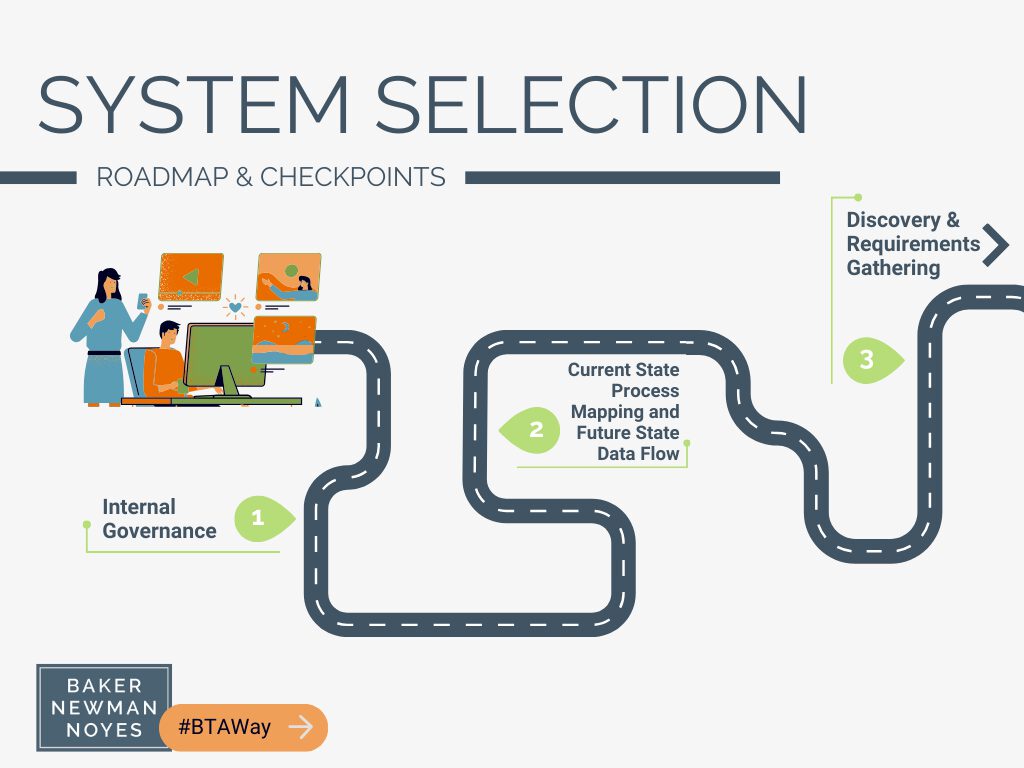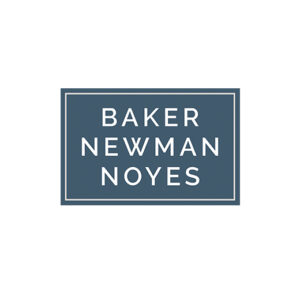Selecting & Implementing a New System at Your Organization, Part 1 – How to Prepare: Establishing project governance for success

Have you ever been in a situation where a vendor that supports one of your current systems is repeatedly missing the mark? Is your current system not supporting and/or adjusting to your workflow needs? Do you or your team spend time manually producing work that a system should be doing for you? Are you concerned about staff frustration and even attrition because your technology is not meeting your operational needs?
Well, you aren’t alone. We hear about these challenges from companies and organizations every day. And that’s where most of these stories start. Across industries and types of vendors, it’s normal for organizations to outgrow their relationship with their current software and need to re-evaluate.

You need a new system. What do you do first?
There are two critical first steps in starting a system selection process: the “who” and the “what.”
- Get the right people in the room: Connect with your end users and staff using the system every day and ask:
- What isn’t working for you in this system?
- How could the system work better for you and your workflows?
- Identify which system(s) your organization needs: A system selection project begins with understanding organizational needs and identifying where there are gaps. Speaking to end users helps identify gaps and pain points, such as:
- Struggles with daily use of the system
- Manual process workarounds to achieve basic system functionality
- Difficulty producing required reports
These issues may indicate that a system no longer fits your business model or operational needs. Sometimes, the overarching IT structure impacts efficiency and could pose risks to the organization. Reviewing current tools and applications on a regular basis helps identify gaps, ensure the right level of support, and determine the necessary requirements to achieve efficiency. This step is crucial for understanding the current state of your operations and the steps needed to achieve your strategic goals.
Project governance: Who should be involved?
Now that you’ve received feedback from your team and established what new system(s) are needed, it’s important to follow a defined process with clear checkpoints. The first step is to establish internal project governance, and define the key roles involved in your selection process. Clear definition of roles and an established governance model during the selection phase allows the organization to navigate the selection and implementation phases with greater ease.
5 key project roles:
- Executive Team: Who will make decisions, set direction, and support risk mitigation for all functional areas in the project?
- Project Sponsor: Who will be responsible for gathering support throughout the organization and higher-level management?
- Project Steering Committee: Who are the key stakeholders to oversee the project from start to finish, and ensure project and organization goals are met?
- Project Liaison: Who can help identify the correct stakeholders and what day-to-day activities they should be involved in?
- Project Manager: Who will document, plan, and identify timelines and manage resources for completing tasks across all organization and vendor project teams? Keep in mind: advisors, such as the BNN BTA team, can provide specialized assistance as project managers.
Where to next?
Once internal governance has been established and roles have been defined and communicated, you’re ready to get started! Next you’ll move into the discovery phase. This includes requirements gathering to organize the information and data needs and desires for the new system. Stay tuned for our next post where we will cover more on the discovery phase!
If you would like to discuss project governance, selecting a new system for your organization, or any other topics in this post further, please contact Ilona Davis, Paige Ricci, or Lauren Hale.
BNN’s Business & Technology Advisory practice offers a suite of system selection and implementation services and can assist organizations of all sizes and across industries achieve operational, technological, and governance success. Get in touch with a member of our team to discuss what service or customized package could help you achieve your goals.
Disclaimer of Liability: This publication is intended to provide general information to our clients and friends. It does not constitute accounting, tax, investment, or legal advice; nor is it intended to convey a thorough treatment of the subject matter.


